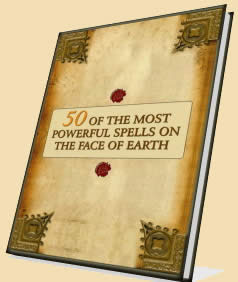 The ceremony begins with a Roman Catholic prayer. Then three drummers begin to play syncopated rhythms. The attendees begin to dance around a tree in the center of the yard, moving faster and harder with the rising pulse of the beat. The priest draws sacred symbols in the dust with cornmeal, and rum is poured on the ground to honor the spirits.
The ceremony begins with a Roman Catholic prayer. Then three drummers begin to play syncopated rhythms. The attendees begin to dance around a tree in the center of the yard, moving faster and harder with the rising pulse of the beat. The priest draws sacred symbols in the dust with cornmeal, and rum is poured on the ground to honor the spirits.
One woman falls to the ground, convulsing for a moment before she is helped back to her feet. She resumes the dance, moving differently now, and continues dancing for hours. It is perhaps no longer she who is dancing: She is in a trance, apparently possessed by Erzuli, the great mother spirit.
It is an honor to be entered and "ridden" by a Loa, or spirit. In Haiti these rituals are commonplace: Voodoo is the dominant religion.
"One common saying is that Haitians are 70 percent Catholic, 30 percent Protestant, and 100 percent voodoo," said Lynne Warberg, a photographer who has documented Haitian voodoo for over a decade.
In April 2003 an executive decree by then president Jean-Bertrand Aristide sanctioned voodoo as an officially recognized religion.
"It is a religion in the same way Judaism or Christianity is," said Bob Corbett, professor emeritus of philosophy at Webster University in St. Louis, Missouri. "Voodoo doesn't have a sacred text, a church, or a hierarchical structure of leaders, but it is very similar culturally."
Ancient Traditions
Voodoo, meaning "spirit," may be one of the world's oldest ancestral, nature-honoring traditions, according to Mamaissii Vivian Dansi Hounon, a member of OATH, the Organization of African Traditional Healers in Martinez, Georgia.
Some anthropologists estimate that voodoo's roots in Benin—formerly Dahomey—West Africa may go back 6,000 years. Today an estimated 60 million people practice voodoo worldwide.
At a voodoo ceremony, believers gather outdoors to make contact with the Loa, any of a pantheon of spirits who have various functions running the universe, much like Greek gods. There is also a responsibility to care for beloved and deified family spirits and to honor a chief god, Bondieu.
During the ceremony, the houngan or mambo—priest or priestess—sacrifices a sanctified chicken or other animal to the Loa. Participants then ask the spirits for advice or help with problems. More than half the requests are for health.
It is said that the Loa sometimes communicate prophecies, advice, or warnings while the believer is possessed. Other messages are sent through the priest or priestess, or sometimes come later in dreams.
These disembodied spirits are believed to become tired and worn down—and rely on humans to "feed" them in periodic rituals, including sacrifices. "It's not the killing of the animals that matters," Corbett said. "It's the transfer of life energy back to the Loa."
Each of the spirits has a distinct identity. Some are loving and good, while others are capricious or demanding. Haitians believe that the Loa most often express their displeasure by making people sick.
Black Magic?
In the West voodoo has been portrayed in zombie movies and popular books as dark and evil, a cult of devil worship dominated by black magic, human sacrifice, and pin-stuck voodoo dolls—none of which exist in the voodoo practices that originated in Benin.
In Haiti voodoo began as an underground activity. During the 1700s thousands of West African slaves were shipped to Haiti to work on French plantations.
The slaves were baptized as Roman Catholics upon their arrival in the West Indies. Their traditional African religious practices were viewed as a threat to the colonial system and were forbidden. Practitioners were imprisoned, whipped, or hung.
But the slaves continued to practice in secret while attending masses. What emerged was a religion that the colonialists thought was Catholicism—but they were outfoxed.
Hybrid Rituals
It was easy to meld the two faiths, because there are many similarities between Roman Catholicism and voodoo, Corbett said. Both venerate a supreme being and believe in the existence of invisible evil spirits or demons and in an afterlife.
Each religion also focuses its ceremonies around a center point—an altar in Catholicism, a pole or tree in voodoo. Their services include symbolic or actual rituals of sacrifice and consumption of flesh and blood, Corbett noted.
Many of the Loa resemble Christian saints, endowed with similar responsibilities or attributes. For example, Legba, an old man, is said to open the gates between Earth and the world of the Loa, much like St. Peter traditionally throws wide the gates to heaven.
But there are differences. Westerners tend to believe in free will and personal choice. Not so in voodoo.
"The Haitian people have a view of the world that is unimaginably different from ours," Corbett said. The Loa are believed to determine our lives to an astonishing degree, he explains, and they are always present in great numbers: There might be two people in a room, but there are also 20 Loa.
"Our view is dominated by physical, touchable reality. In Haiti the spirits are as real as your wife or your dog," Corbett said.
Like any other religious practice, voodoo brings great benefits, explains Warberg, the photographer. "Participation in voodoo ritual reaffirms one's relationships with ancestors, personal history, community relationships—and the cosmos. Voodoo is a way of life," she said.
Books You Might Enjoy:
Sasha Fierce - The Book Of Shadows
Austin Osman Spare - A Book Of Satyrs
Austin Osman Spare - The Logomachy Of Zos
Meshafi Resh - The Black Book




